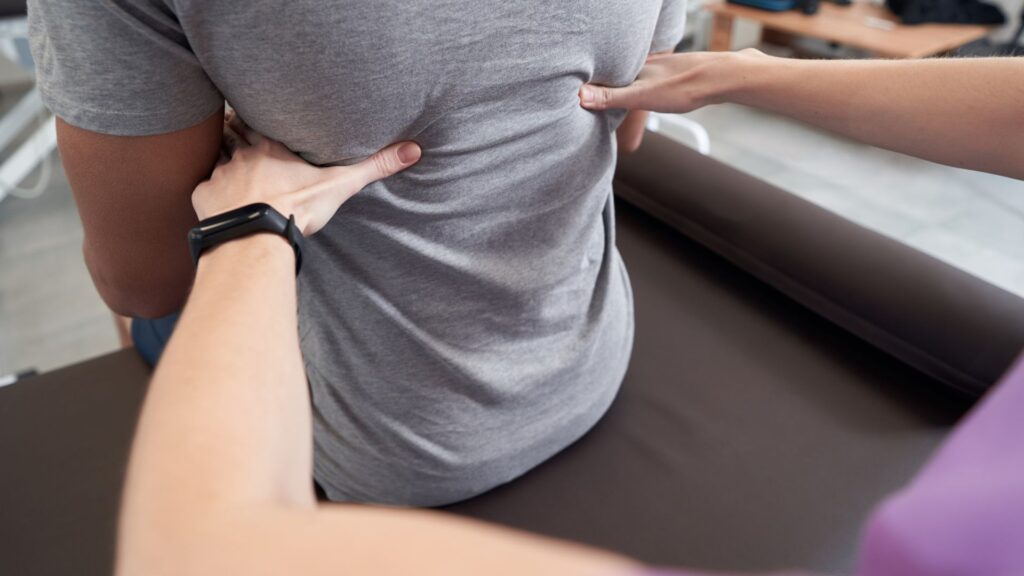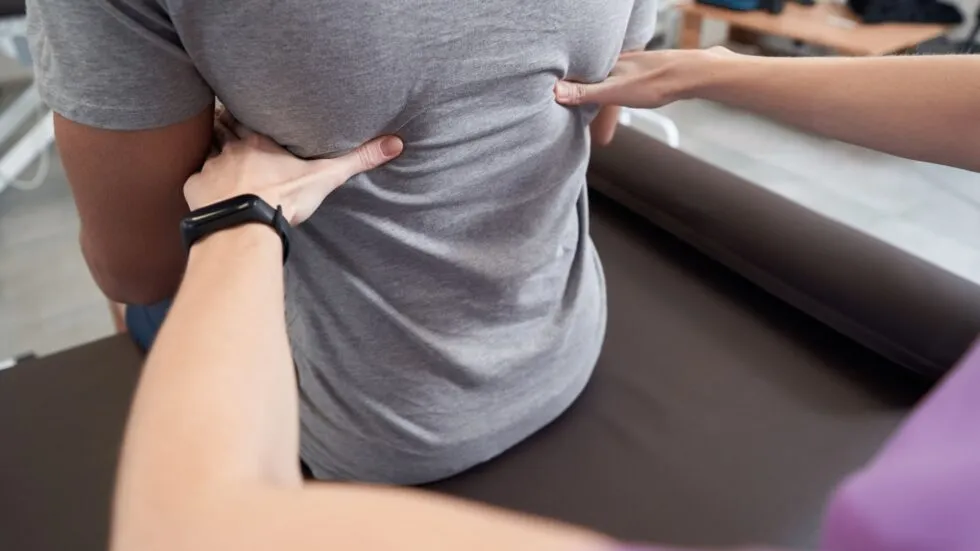
Do you notice a dull ache or tightness in your mid-back after sitting for long hours at your desk, in the car, or even on the couch? You’re not alone. Many patients who visit Family Chiropractic of Clark describe discomfort in the thoracic spine (mid-back region) that worsens with sitting.
The good news? Mid-back aches often come from muscle fatigue, posture habits, and spinal misalignments — and small changes in your daily routine can make a big difference.
Why Sitting Causes Mid-Back Pain
1. Poor Posture Habits
When we sit, especially while working at a computer or looking down at a phone, it’s easy to round the shoulders forward and slouch. This puts constant strain on the muscles between your shoulder blades and the mid-back spine.
2. Weak Core and Back Muscles
A weak core means your spine has less support while sitting, causing the mid-back muscles to work overtime. Over time, this leads to stiffness and pain.
3. Spinal Misalignments
Misalignments in the thoracic vertebrae can irritate nerves, tighten surrounding muscles, and create discomfort that flares up during prolonged sitting.
4. Prolonged Stillness
Even with “perfect posture,” sitting too long reduces blood flow to the spine and muscles, contributing to fatigue and soreness.
Small Changes That Help Mid-Back Pain
1. Reset Your Posture Every 30 Minutes
Set a reminder to sit tall:
- Keep your feet flat on the floor.
- Shoulders relaxed but pulled slightly back.
- Ears aligned with shoulders, avoiding forward head posture.
Even a quick reset helps break the cycle of slouching.
2. Take Micro-Breaks
Stand up, stretch, or walk around for 1–2 minutes every 30–60 minutes. Movement restores circulation and relieves pressure on the spine.
3. Use Ergonomic Support
- Choose a chair with lumbar and mid-back support.
- Keep screens at eye level to avoid hunching forward.
- Place a small cushion behind your mid-back for gentle support.
4. Try Gentle Mid-Back Stretches
- Seated Twist: Sit tall, cross your arms over your chest, and gently rotate your upper body left and right. Hold each side for 10–15 seconds.
- Cat-Cow Stretch: On hands and knees, alternate arching your back upward and then lowering your belly toward the floor. Repeat 5–10 times.
- Chest Opener: Stand in a doorway, place your arms against the frame, and gently lean forward to stretch tight chest muscles that contribute to rounding.
5. Strengthen Supporting Muscles
Regular exercises like rows, planks, or resistance band pulls can improve posture by strengthening the muscles that stabilize your mid-back.
How Chiropractic Care Can Help
At Family Chiropractic of Clark, we don’t just treat symptoms — we correct the root causes of mid-back pain. Chiropractic adjustments can:
- Restore motion and alignment in the thoracic spine.
- Relieve pressure on irritated nerves.
- Reduce muscle tension and improve posture naturally.
- Provide personalized guidance for ergonomics and stretches at home.
With consistent care, many patients experience lasting relief and better resilience during long hours of sitting.

When to Seek Professional Help
Schedule an appointment if your mid-back pain:
- Persists for more than a week despite self-care.
- Radiates around the chest or ribs.
- Is accompanied by tingling, numbness, or weakness.
- Interferes with your daily activities or sleep.
Final Thoughts
Mid-back aches after sitting don’t have to be your “new normal.” By making small posture adjustments, adding simple stretches, and seeking chiropractic care when needed, you can protect your spine and feel more comfortable every day.
👉 Ready to say goodbye to mid-back aches? Schedule your visit with Family Chiropractic of Clark and start moving toward better posture and pain-free living.
